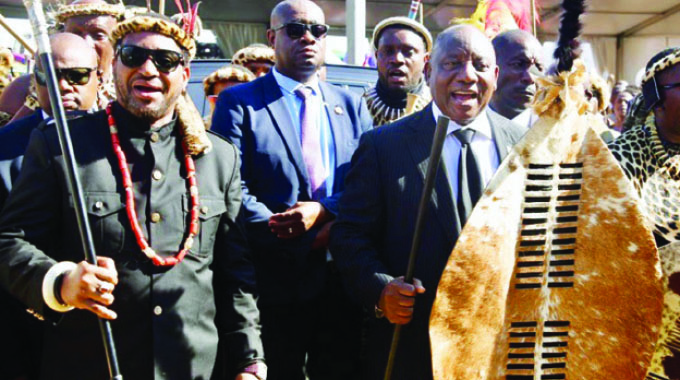Climate change threatens 100m in Africa

LONDON. – More than 100 million extremely poor people in Africa are threatened by accelerating climate change that could also melt away the continent’s few glaciers within two decades, a UN report warned yesterday.
In a report ahead of the COP 26 climate summit in Glasgow, the UN highlighted Africa’s “disproportionate vulnerability” last year from food insecurity, poverty and population displacement.”
By 2030, it is estimated that up to 118 million extremely poor people will be exposed to drought, floods and extreme heat in Africa, if adequate response measures are not put in place,” said Josefa Leonel Correia Sacko, commissioner for rural economy and agriculture at the African Union Commission.
The extremely poor are those who live on less than US $1,90 per day, according to the report coordinated by the World Meteorological Organization (WMO).”The rapid shrinking of the last remaining glaciers in eastern Africa, which are expected to melt entirely in the near future, signals the threat of imminent and irreversible change to the Earth system,” Taalas said.
Last year Africa’s land mass and waters warmed more rapidly than the world average, the report said.
The 30-year warming trend from 1991-2020 was above that of the 1961-1990 period in all of Africa’s regions. The rate in sea level rise along the tropical coasts and the south Atlantic as well as along the Indian Ocean was higher than the world average.
Though too small to serve as significant water reserves, Africa’s glaciers have high tourism and scientific value and yet are retreating at a rate higher than the global average.
“If this continues, it will lead to total deglaciation by the 2040s,” the report said.”
Mount Kenya is expected to be deglaciated a decade sooner, which will make it one of the first entire mountain ranges to lose glaciers due to human-induced climate change.”
The other glaciers in Africa are on the Rwenzori Mountains in Uganda and Mount Kilimanjaro in Tanzania.
To avoid even higher costs of disaster relief, the WMO urged African countries to invest in “hydrometeorological infrastructure and early warning systems to prepare for escalating high-impact hazardous events.”
It backed broadening access to early warning systems and to information on food prices and weather, including with simple text or voice messages informing farmers when to plant, irrigate or fertilize.”
Meanwhile, African countries want a new system to track funding from wealthy nations that are failing to meet a US$100-billion annual target to help the developing world tackle climate change, the continent’s lead climate negotiator said.
The demand highlights tensions ahead of the COP26 climate summit between the world’s 20 largest economies, which are behind 80% of greenhouse gas emissions, and developing countries that are bearing the brunt of the effects of global warming.
“If we prove that someone is responsible for something, it is his responsibility to pay for that,” said Tanguy Gahouma, chair of the African Group of Negotiators at COP26.
In 2009, developed countries agreed to raise US$100 billion per year by 2020 to help the developing world deal with the fallout from a warming planet. The latest available estimates from the Organisation for Economic Co-operation and Development (OECD) show this funding hit US$79,6 billion in 2019, just 2 percent more than in 2018.
The OECD data shows Asian countries on average received 43 percent of the climate finance in 2016-19, while Africa received 26 percent. Gahouma said a more detailed shared system was needed that would keep tabs on each country’s contribution and where it went on the ground.
“They say they achieved maybe 70 percent of the target, but we cannot see that,” Gahouma said.
“We need to have a clear roadmap how they will put on the table the US$100 billion per year, how we can track (it),” he said in an interview yesterday. “We don’t have time to lose and Africa is one of the most vulnerable regions of the world.”
Even as wealthy nations miss the $100 billion target, African countries plan to push for this funding to be scaled up more than tenfold by 2030. – AFP/Reuters










Comments